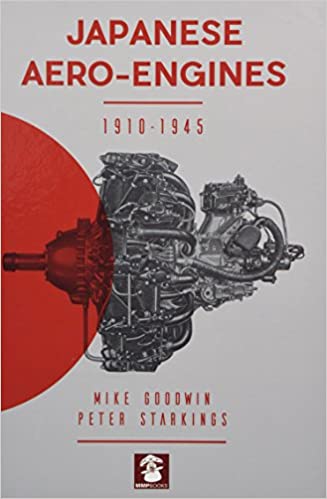Wright R-1820 Cyclone
The Wright R-1820 Cyclone 9 is an American radial engine developed by Curtiss-Wright, widely used on aircraft in the 1930s through 1950s. It was produced under license in Spain as the Hispano-Suiza 9V or Hispano-Wright 9V, and in the Soviet Union as the Shvetsov M-25.
Design and Development
The R-1820 Cyclone 9 represented a further development of the Wright P-2 engine dating back to 1925. Featuring a greater displacement and a host of improvements, the R-1820 entered production in 1931. The engine remained in production well into the 1950s. The R-1820 was built under license by Lycoming, Pratt & Whitney Canada, and also, during World War II, by the Studebaker Corporation. The Soviet Union had purchased a license for the design, and the Shvetsov OKB was formed to metricate the American specification powerplant for Soviet government-factory production as the M-25, with the R-1820's general design features used by the Shvetsov design bureau for many of their future radials for the Soviet air forces through the 1940s and onwards. In Spain the R-1820 was license-built as the Hispano-Suiza 9V or Hispano-Wright 9V. The R-1820 was at the heart of many famous aircraft including early Douglas airliners (the prototype DC-1, the DC-2, the first civil versions of the DC-3, and the limited-production DC-5), every wartime example of the Boeing B-17 Flying Fortress and Douglas SBD Dauntless bombers, the early versions of the Polikarpov I-16 fighter (as the M-25), and the Piasecki H-21 helicopter. The R-1820 also found limited use in armoured vehicles. The G-200 variant developed 900 hp (670 kW) at 2,300 rpm and powered the M6 Heavy Tank. D-200 Diesel
The Wright RD-1820 was converted to a diesel during World War II by Caterpillar Inc. as the D-200 and produced 450 hp (340 kW) at 2,000 rpm in the M4A6 Sherman.
General characteristics: (GR-1820-G2)
Components
Performance
The R-1820 Cyclone 9 represented a further development of the Wright P-2 engine dating back to 1925. Featuring a greater displacement and a host of improvements, the R-1820 entered production in 1931. The engine remained in production well into the 1950s. The R-1820 was built under license by Lycoming, Pratt & Whitney Canada, and also, during World War II, by the Studebaker Corporation. The Soviet Union had purchased a license for the design, and the Shvetsov OKB was formed to metricate the American specification powerplant for Soviet government-factory production as the M-25, with the R-1820's general design features used by the Shvetsov design bureau for many of their future radials for the Soviet air forces through the 1940s and onwards. In Spain the R-1820 was license-built as the Hispano-Suiza 9V or Hispano-Wright 9V. The R-1820 was at the heart of many famous aircraft including early Douglas airliners (the prototype DC-1, the DC-2, the first civil versions of the DC-3, and the limited-production DC-5), every wartime example of the Boeing B-17 Flying Fortress and Douglas SBD Dauntless bombers, the early versions of the Polikarpov I-16 fighter (as the M-25), and the Piasecki H-21 helicopter. The R-1820 also found limited use in armoured vehicles. The G-200 variant developed 900 hp (670 kW) at 2,300 rpm and powered the M6 Heavy Tank. D-200 Diesel
The Wright RD-1820 was converted to a diesel during World War II by Caterpillar Inc. as the D-200 and produced 450 hp (340 kW) at 2,000 rpm in the M4A6 Sherman.
General characteristics: (GR-1820-G2)
- Type: Nine-cylinder single-row supercharged air-cooled radial engine
- Bore: 6 1⁄8 in (155.6 mm)
- Stroke: 6 7⁄8 in (174.6 mm)
- Displacement: 1,823 in³ (29.88 L)
- Length: 47.76 in (1,213 mm)
- Diameter: 54.25 in (1,378 mm)
- Dry weight: 1,184 lb (537 kg)
Components
- Valvetrain: Two overhead valves per cylinder with sodium-filled exhaust valve
- Supercharger: Single-speed General Electric centrifugal type supercharger, blower ratio 7.134:1
- Fuel system: Stromberg PD12K10 downdraft carburetor with automatic mixture control
- Fuel type: 87 octane rating gasoline
- Oil system: Dry sump with one pressure and one scavenging pump
- Cooling system: Air-cooled
Performance
- Power output: 1,000 hp (746 kW) at 2,200 rpm for takeoff
- Specific power: 0.46 hp/in³ (20.88 kW/L)
- Compression ratio: 6.45:1
- Specific fuel consumption: 0.6 lb/(hp•h) (362 g/(kW•h))
- Oil consumption: 0.35-0.39 oz/(hp•h) (13-15 g/(kW•h))
- Power-to-weight ratio: 0.84 hp/lb (1.39 kW/kg)
Source(s):
Wikipedia
Gunston, Bill (2006). World Encyclopedia of Aero Engines: From the Pioneers to the Present Day (5th ed.). Stroud, UK: Sutton. ISBN 0-7509-4479-X.
Wikipedia
Gunston, Bill (2006). World Encyclopedia of Aero Engines: From the Pioneers to the Present Day (5th ed.). Stroud, UK: Sutton. ISBN 0-7509-4479-X.






